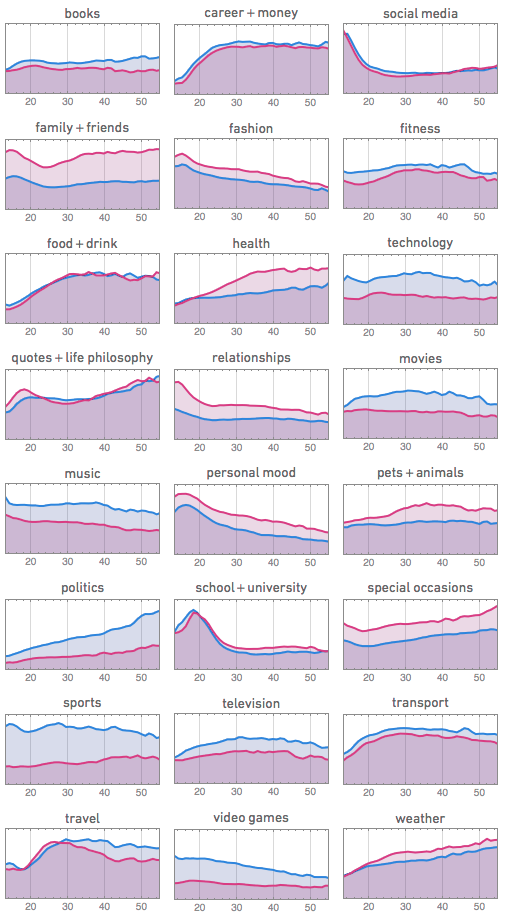What the Data from Facebook Tells Us About Human Trajectories
A few weeks ago, we decided to start analyzing the data from our Wolfram|Alpha Personal Analytics for Facebook. And I have to say that if nothing else it’s been a terrific example of the power of Mathematica and the Wolfram Language for doing data science.
We’d always planned to use the data we collect to enhance our Personal Analytics system. But I couldn’t resist also trying to do some basic science with it.
I’ve always been interested in people and the trajectories of their lives. But I’ve never been able to study this systematically—until now. With the data we have, it’s possible to do all sorts of things that weren’t possible before. And in this blog post I want to share just a few initial results.
First, let’s take a look at human life trajectories in general. Here’s a plot of how people’s activity on Facebook changes with age:
We can see all sorts of things from this plot—for example, that there are two big spikes of activity, one around age 13 and another around age 22. But already we can start to ask more quantitative questions: for example, what’s the average trajectory?
To answer this, we can take all the individual trajectories, align them by age, and then take an average:
This average trajectory is already telling us a lot. For example, we can see that there are three distinct phases in a typical human life on Facebook:
1. An initial phase of exploration and experimentation, from age 13 to about age 17.
2. A phase of more focused and consistent activity, from age 18 to about age 24.
3. A phase of gradually declining activity, from age 25 onward.
Of course, there are all sorts of individual variations on this general pattern—but it’s still fascinating to see the overall shape that emerges.
We can also ask how much people’s activity on Facebook varies from day to day:
On average, people’s activity varies by about 20% from day to day. But there are all sorts of individual variations: some people have very consistent activity, while others have much more erratic patterns.
We can also look at how people’s activity on Facebook changes over longer periods of time:
Here we can see that there are generally two types of behavior: either people’s activity stays roughly constant, or else it varies erratically. Interestingly, though, there seems to be a general trend for people to become more erratic as they get older.
One final thing we can look at is how people’s activity on Facebook relates to the time of day:
Overall, we see a clear pattern of people being most active on Facebook during the daytime, with a peak around noon. There’s a second smaller peak in the evening, around 9pm.
These are just a few of the things we can learn from looking at the data from Facebook. In future posts, I’ll share more results from our analysis. And I’m also working on developing some further methods for analyzing human trajectories. But already I think this data is giving us some fascinating insights into the nature of human life.

